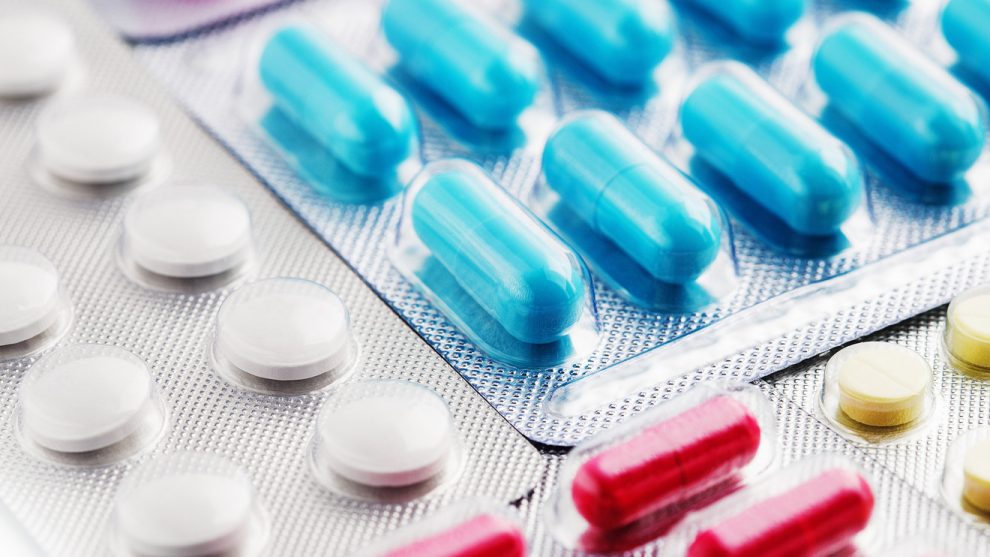
How do you treat this seven-year itch?
The costs of these top-selling drugs saw a median increase of 76% over the six-year period, according to new research published in JAMA Network Open, with the prices of most increasing either once or twice annually. JAMA is the Journal of the American Medical Association.
The findings suggest that the cost of popular brand-name drugs double every seven to eight years. And the situation doesn’t seem likely to improve, the study by Scripps Research Translational Institute researchers found. “Greater price transparency is warranted,” they said.
Some 48 out of 49 most common brand-name prescription drugs in the U.S. got more expensive between early 2012 and late 2017, new research suggests.
Some 48 out of 49 most common brand-name prescription drugs in the U.S. got more expensive between early 2012 and late 2017. All this data suggest that these products — and even emerging ones — are likely to continue escalating in price, they added.
The researchers studied drugs that exceeded $500 million in U.S. sales or $1 billion globally, had more than 100,000 pharmacy claims during those six years, and had available net price data. (Pharmacy claims are sent to the payer for a payment decision.)
The research comes amid heightened national scrutiny of rising drug costs: Health and Human Services Secretary Alex Azar, for example, said last month that the Trump administration would mandate that pharmaceutical companies disclose list prices in TV ads for drugs that cost more than $35 for a one-month supply.
What’s more, 17 of these drugs — more than one-third — saw their costs more than double. Among them were Chantix, a smoking-cessation aid; Lipitor, a statin used to reduce high cholesterol; Lyrica, which is used to treat nerve pain and seizures; Novolog, an insulin; Humira, which treats a range of autoimmune conditions; Forteo, an osteoporosis injection; and the erectile-dysfunction medication Viagra.
The researchers studied drugs that exceeded $500 million in U.S. sales or $1 billion globally, and had over 100,000 pharmacy claims during those six years
The median cost per prescription of Lipitor, for example, rose from $116 in January 2012 to $274 in December 2017. Lyrica’s median cost increased from $174 to $411 over the same period.
“We recognize that health care has become more expensive for Americans, and that includes paying for the medicines we make,” Marisa Sharkey, a spokeswoman for Novo Nordisk NVO, +2.82% the maker of Novolog, said in a statement. “As a company focused on improving the lives of people with diabetes, this is not acceptable,” Sharkey told MarketWatch.
“However, 80% of people in non-high deductible commercial health plans pay $50 or less per month for a prescription of one of our insulin analogs, the out-of-pocket amount people with insurance pay for our medicines is due, in large part, to benefit design,” she added.
“For those patients who do pay list price (either because they’re in a high deductible health plan or because they are paying cash for their medicines), we are focused on doing all we can so these patients can afford their medicine, and we offer support to help defray the costs they face,” Sharkey added.
She highlighted a company initiative to provide human insulin for about $25 per vial at many national pharmacy chains, co-pay assistance programs and a company-sponsored patient-assistance program to provide free insulin to uninsured people with diabetes.
Manufacturers Pfizer PFE, +0.96% AbbVie ABBV, -1.32% and Eli Lilly LLY, +0.72% did not immediately return MarketWatch requests for comment.
The researchers analyzed pharmacy-claims data from the Blue Cross Blue Shield Axis database, which contains information from more than 35 million people with private insurance.
The researchers analyzed data from the Blue Cross Blue Shield Axis database, which contains information from over 35 million people with private insurance.
They cautioned that the data didn’t include information about rebates that could lower drug prices for patients, as rebates can’t be linked to individual claims.
Instead, the researchers had obtained third-party estimates of the drugs’ net prices to capture the effect of rebates. There was a high correlation between costs and net prices, they found, suggesting that the idea that “higher list prices and greater reliance on rebates reduce costs” could be untrue.
In addition, they found that competition between interchangeable brand-name products “appeared to do little to stymie rising costs.” Competing drugs actually had some of the biggest industry price increases over the six-year study period.
Prescription drugs make up about 9.5% of total health-care expenditures in the U.S., according to 2017 data from the Centers for Medicare and Medicaid Services. U.S. prescription drug spending per person, adjusting for inflation, rose from $90 to $1,025 between 1960 and 2017. And an analysis last month showed that most of the health-care industry’s profits were going to pharmaceutical companies.
U.S. prescription drug spending per person, adjusting for inflation, rose from $90 to $1,025 between 1960 and 2017. Prescription drugs make up about 9.5% of total health-care expenditures.
Meanwhile, more than a quarter of adults who take prescription medication say they have a “somewhat” or “very” difficult time affording their treatment, according to a Kaiser Family Foundation poll.
The authors of the present study emphasized the need to balance “reasonable” consumer drug costs with incentives for drug companies to innovate life-saving medications.
“The United States provides drug companies with the strongest patent protections in the world,” they wrote, “but legal strategies in the pharmaceutical industry, such as patenting peripheral aspects of a drug that extend exclusivity rights beyond the original patent and delay generic and biosimilar competition, abuse that liberty.”









